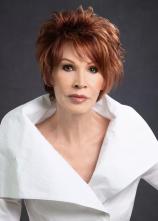Author Talk: August 2004
August 2004
In this interview Sandra Brown discusses her latest novel, WHITE HOT, which takes place in a small Louisiana town. Brown talks about the influence that the South and its people have had on her writing and how the number of "crazy" individuals there make it a fascinating area to write about. She also explains how she keeps finding inspiration after writing more than fifty New York Times bestsellers and provides readers with some hints about her upcoming novel.
Q: While your novels have been set in locations from San Francisco to New York, many are set in the South, including WHITE HOT, which takes place in a small, sultry Louisiana town. What is it about the South that makes it a prime location for your tales of murder and suspense?
Sandra Brown: I once read an article that said --- and I paraphrase --- it's little wonder there are so many Southern writers, because Southerners have so many crazy people to write about. That's funny, but it also has an element of truth. We seem to breed interesting characters.
Q: You've described WHITE HOT as "more of a potboiler" than your previous novels --- how so?
SB: I remember telling my editors Michael Korda and Chuck Adams over cups of hot cocoa that I was in the mood to write something "swampy." They asked me to define "swampy" as it relates to a novel. I described the pervasive and oppressive heat, the unrest and malcontent that kind of climate brews, and characters with sordid pasts. They understood and told me to go with my instincts. WHITE HOT is more character driven than action driven, as most of my recent novels have been.
Q: In WHITE HOT, you once again feature a brand new set of characters and situations. Are you ever tempted to revisit certain characters or write a series with recurring characters?
SB: Often I think about the characters in past books and wonder what they're up to these days, but never to the point of wanting to write another story about them. I admire writers who can keep a recurring character fresh and interesting. I prefer resolving the problems of one set of characters, then moving on to the next. Otherwise, I think I'd get bored.
Q: You've had fifty-two New York Times bestsellers. How do you keep finding inspiration? How has your focus changed over the years?
SB: I'm doing the same thing I was doing fifty-two bestsellers ago --- writing about people and subjects that interest me, and hoping that readers find them equally interesting. I've drawn inspiration from current issues, certainly. More often, I'm fascinated by people --- how they think, behave and feel. Sometimes a story arises out of an emotion to which everyone can relate --- such was the case with ENVY.
Q: Why did you choose to write about the Iron industry, a decidedly unglamorous business?
SB: I needed an industry to mirror the villain, Huff Hoyle. His heart is so black, his tyranny over this one-industry town so absolute, I needed an industry that was equally as dark, ugly and dangerous as he. Metal casting requires extensive training and conscientious micro-management. Without that, there's a high risk of maiming accidents and even death. Workers deal with liquid fire, which contributed to the title.
Q: Your novels appeal to both men and women. How are you able to cross the so-called "gender barrier?"
SB: I'd like to think the answer to that question is simple --- I write a good story. As a reader, it doesn't matter to me if a book is set in outer space or a castle in Spain, as long as the writer entertains me.
Q: Are your characters based either on people you know or celebrities?
SB: Never.
Q: Do you ever base characters or stories on your own experiences?
SB: That would be one dull book!
Q: WHITE HOT includes a special dedication. Can you tell us about Mark Smith?
SB: Mark was my brother-in-law who died this year at age forty from ALS, commonly known as Lou Gehrig's disease. He was diagnosed four years ago. This disease slowly but inexorably ravaged him until he died. Anyone interested in learning more about it, or in making a contribution toward research for treatment and, hopefully, a cure, should contact the Muscular Dystrophy Association.
Q: What's next after WHITE HOT?
SB: I've moved to the opposite extreme. The next book is about a woman marooned by a snowstorm with a man believed to be a serial killer. While writing WHITE HOT, I sweated. Now, I'm shivering!




